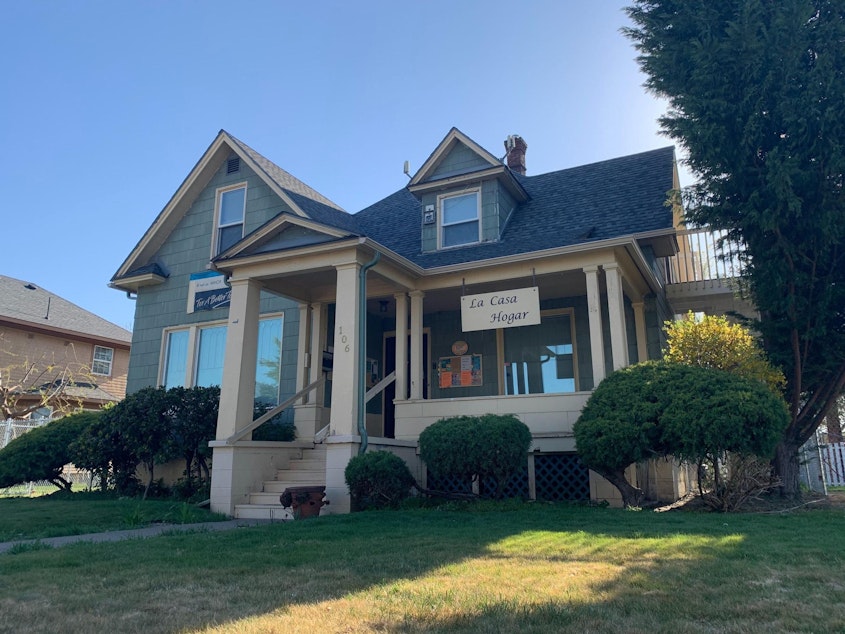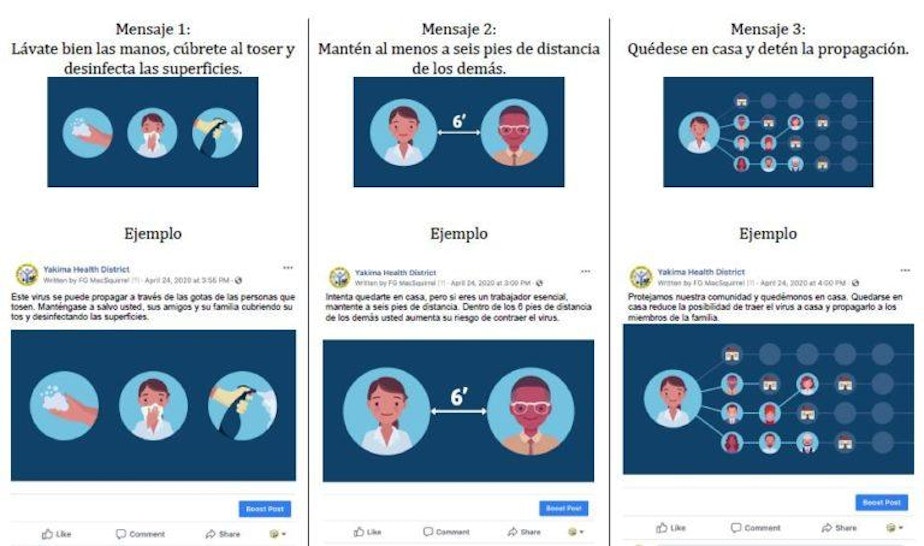Central Washington Non-Profits Adjust To Provide Critical Coronavirus Information In Spanish

News and information on the COVID-19 pandemic released by state and local governments is primarily in English. And though health districts and emergency management offices translate some of that information into Spanish, immigrant communities in places like the Yakima Valley still struggle to access that information.
In the Yakima Valley, adult education non-profits serving the region’s immigrants are stepping up to fill that need.
Just like almost every organization in Washington , Nuestra Casa had to find ways to adapt to the COVID-19 pandemic. The Sunnyside organization normally teaches classes of Yakima Valley immigrants how to speak English, how to prepare for citizenship exams, and provides resources for support and educational groups.
But when schools closed and parents had to stay home to watch their children, classes and meetings stopped. When Governor Jay Inslee enacted his emergency stay at home order, staff had to move operations online. Work being done on new projects stopped in favor of making those tough transitions.
“It kind of pulled the rug under us,” Executive Director Caty Padilla said. Padilla is leading Nuestra Casa through the pandemic. She’s also trying to figure out what role the non-profit should play in helping the Yakima Valley’s immigrant community get through this challenging time.
Sponsored
“Are we just updating the community? Are we going to continue teaching our classes via phone? Or is there an actual space for us?” Padilla said, describing discussions among staff.
An Apparent Need
Staff at La Casa Hogar, another educational non-profit in the city of Yakima, are having the same discussion. As those discussions took place, students reached out with questions. What the immigrant communities they serve needed was in Spanish, from how to protect themselves from infection to where to look for resources to weather job losses.
The need was apparent to La Casa Hogar executive director Laura Armstrong after the county district issued a stay-at-home order on March 23.
“That Monday we found that many of our students didn’t know the health district had called for that,” Armstrong said.
Sponsored
Public health information is online, spread out on various state and local government websites. And it’s increasingly available in Spanish and other languages. During emergencies like wildfires, emergency management offices are required by law to communicate with communities in their language if they make up 5% or 1,000 people of their jurisdiction population, whichever is less.
“But the messaging hasn’t been as fast in Spanish for the public as they have for English-speaking communities,” Padilla said. “We really had to step up in that area.”
Agencies have gone beyond the law’s requirements recently. On April 6, the Washington State Department of Health launched its own Spanish-language podcast and blog Bienestar WA.
The Yakima Health District has started holding news conferences in Spanish, livestreamed on social media. On April 8, they also launched an online coronavirus tool kit called YakimaJuntos.org, with basic health tips on flyers and videos in Spanish.

Sponsored
From the beginning of the coronavirus outbreak, the Yakima Health District has worked to provide consistent health information to both English and Spanish speakers, community health specialist Erika Ochoa said.
But Ochoa says simply translating information isn’t enough. It’s also important to provide information that’s culturally responsive and considers socio economic challenges faced by immigrants.
“Even the message of staying at home seems so daunting because not everyone has the luxury of working from home,” Ochoa said, referencing farmworkers and other essential workers who are predominantly Latinx. “Social distancing was hard to explain too because many families may sometimes reside within one household.”
Padilla of Nuestra Casa points out that simple word choice can also be a hurdle when government agencies translate messaging.
“There’s still words that are used in a lot of messaging that isn’t really understood in the Spanish that we speak,” Padilla said, using the word ‘propagación’ or propagation as an example. Just as in English you’re more likely to use the word ‘spread’ to describe how a virus moves through a community, in Mexican Spanish, the more common variant here, ‘contagio’ is more well understood.
Sponsored
Where To Go For Help
Ochoa says the fundamental obstacle is that government agencies aren’t the first place people turn to for help. To begin, people only really interact with the health district if they need a food handlers card or a birth certificate.
“We may have all of the context. But we’re not the first place people think of,” Ochoa said. “What’s the number? How do I get a hold of them? Will they speak English? They don’t know who we are, but they know who Caty down at Nuestra Casa is.”
On top of that, undocumented people sometimes mistrust government agencies for fear they’ll share personal information with federal immigration authorities, as the state Department of Licensing has done in the past.
“Being able to be there for those agencies that may have nothing to do with health but they have that built in trust, is really big,” Ochoa said.
Sponsored
Nuestra Casa isn’t just taking questions from people who reach out to them. They and La Casa Hogar have partnered with the health district to take a more proactive approach, reaching out to students over the phone and going on air at Spanish-language broadcaster KDNA.
Disseminating public health information through older telecommunications technologies and not the latest social media platforms is necessary because internet access or knowing how to navigate it is not a given in immigrant communities, Armstrong said.
“The way people are sharing information about this virus is by forwarding links, lots and lots of links, and you have to read all of these things in the links,” Armstrong said. “And that is again overwhelming and not how our community receives information.”
That understanding of how the immigrant community gets information is why Nuestra Casa and La Casa Hogar have stepped up, even though disseminating public health information is not their own expertise or a core part of their mission.
“Our mission is educating and partnering with our families,” Armstrong said. “In the past that’s been through leadership development and through education. But maybe that looks different right now in times of emergency that require different means and different responses.”
